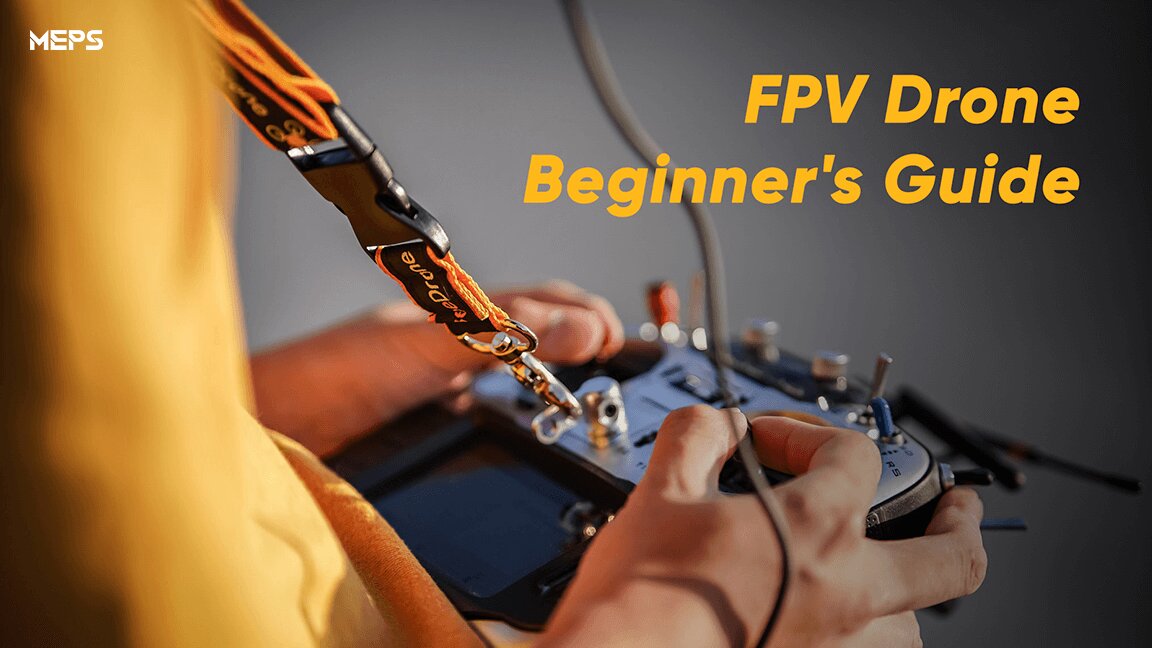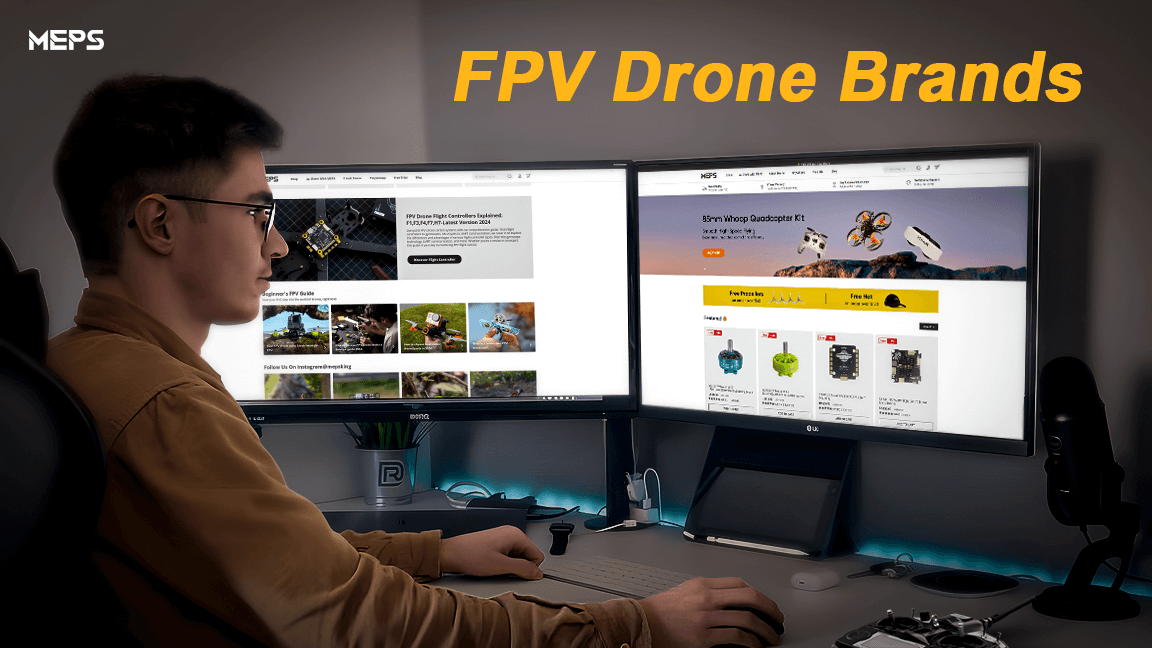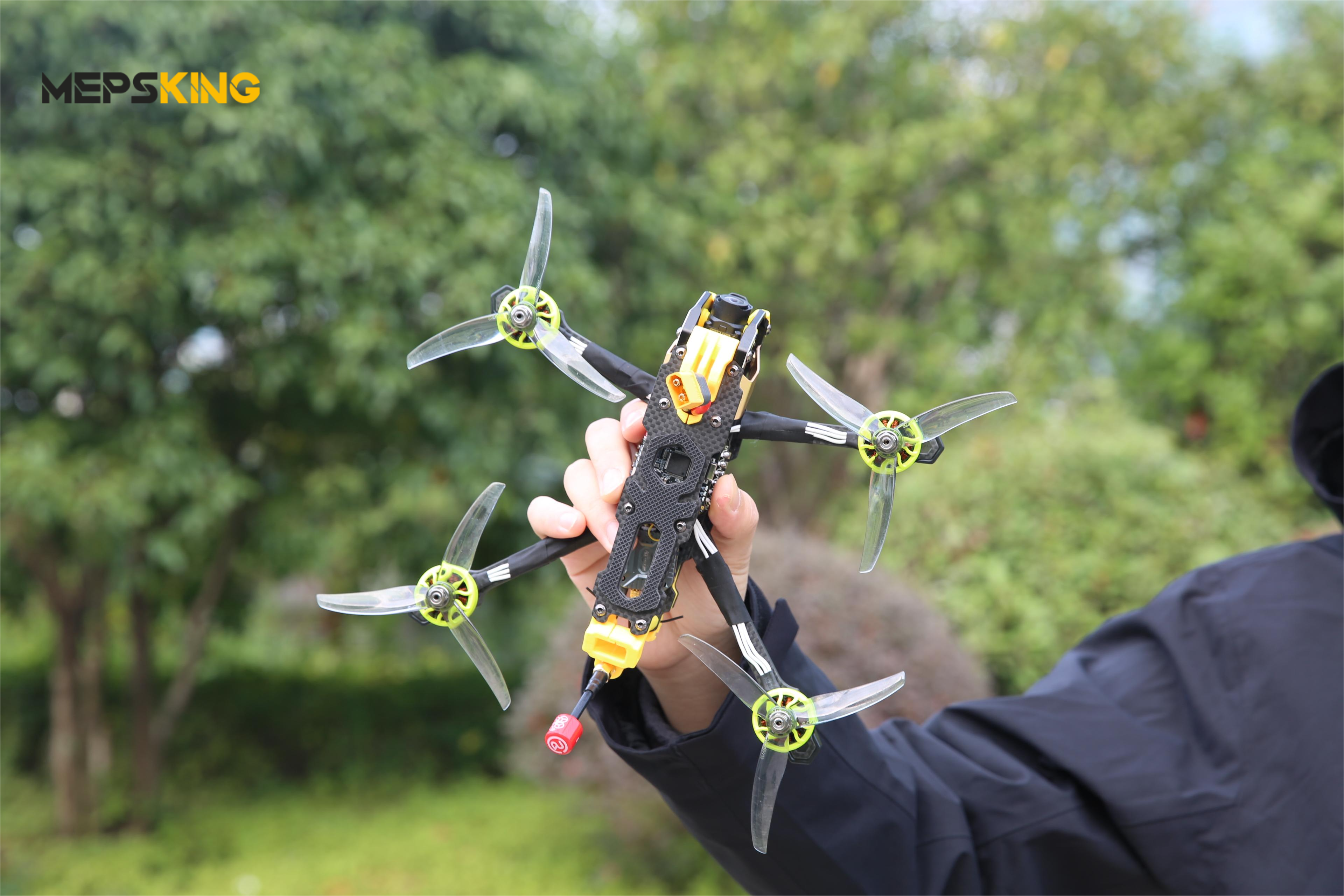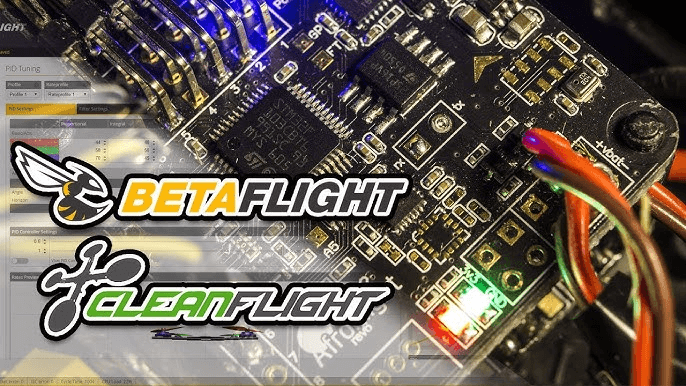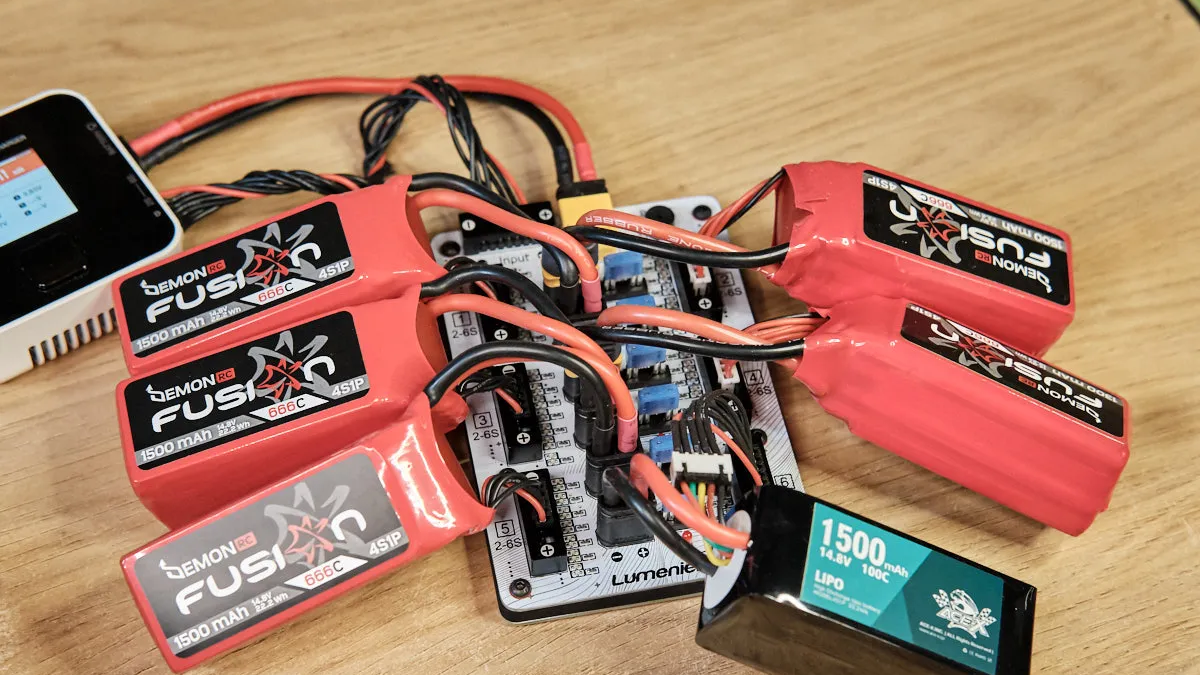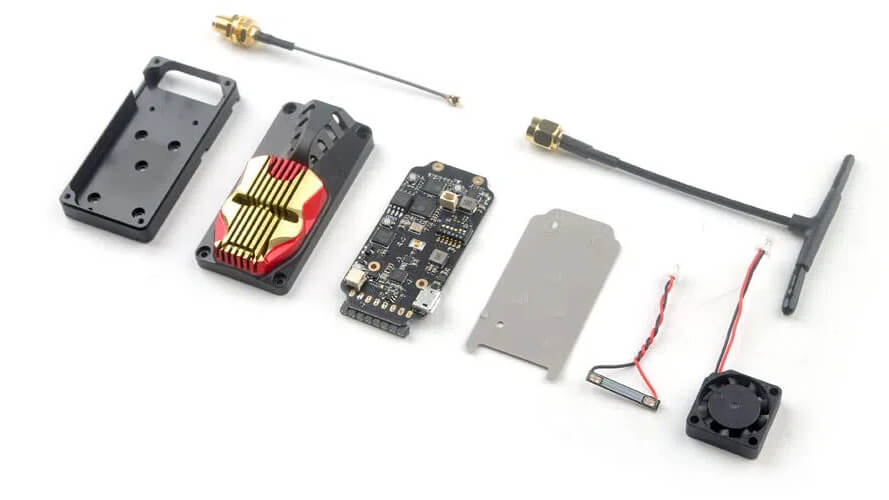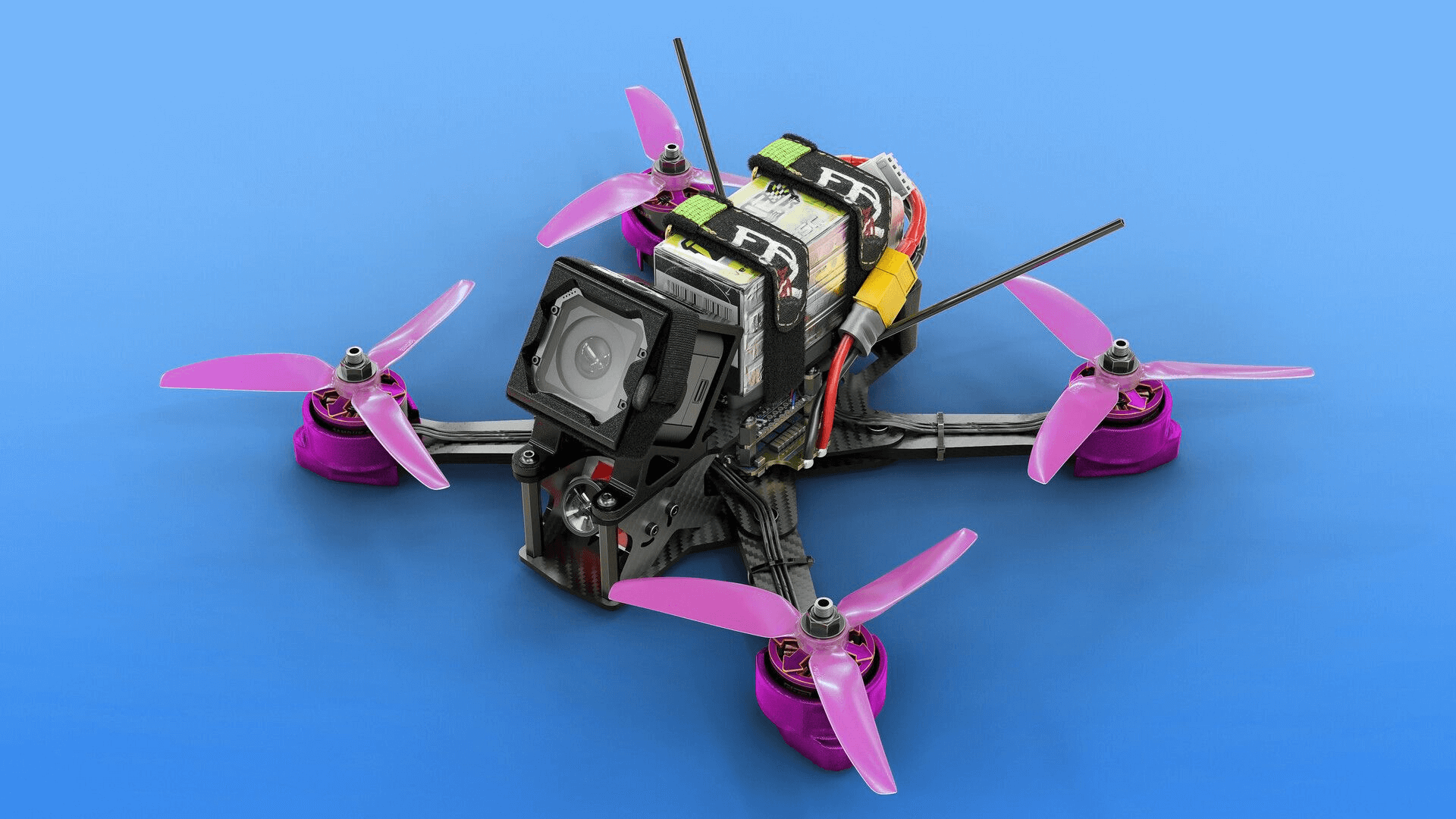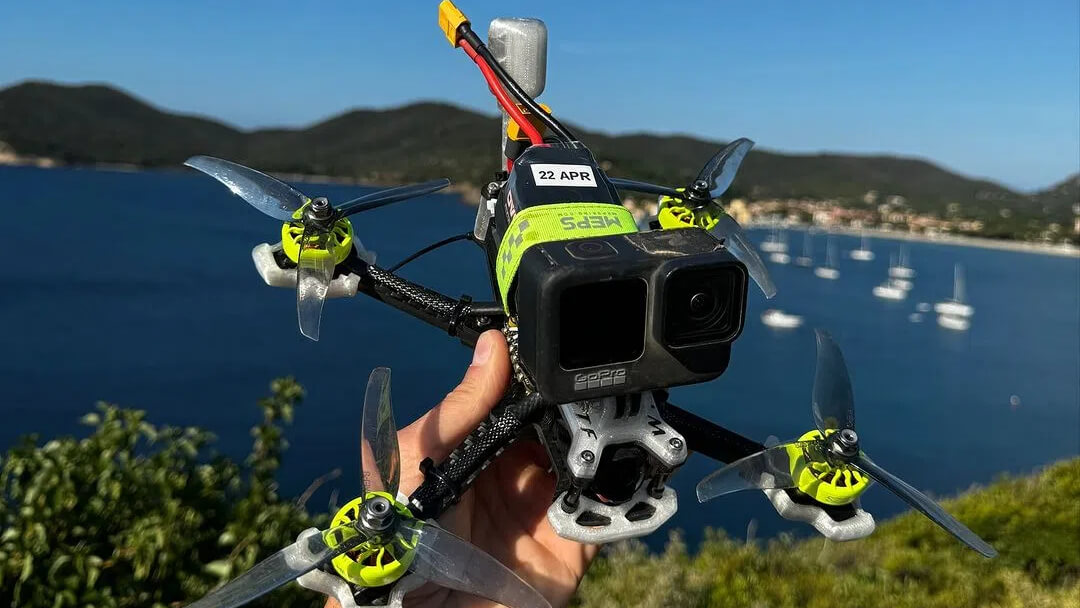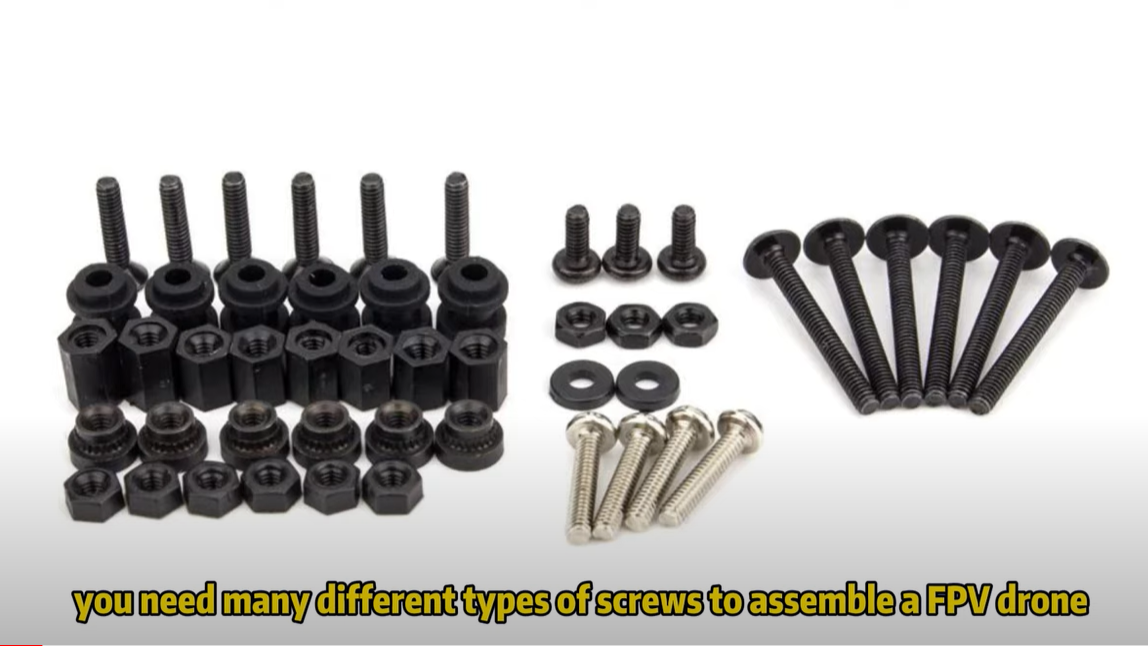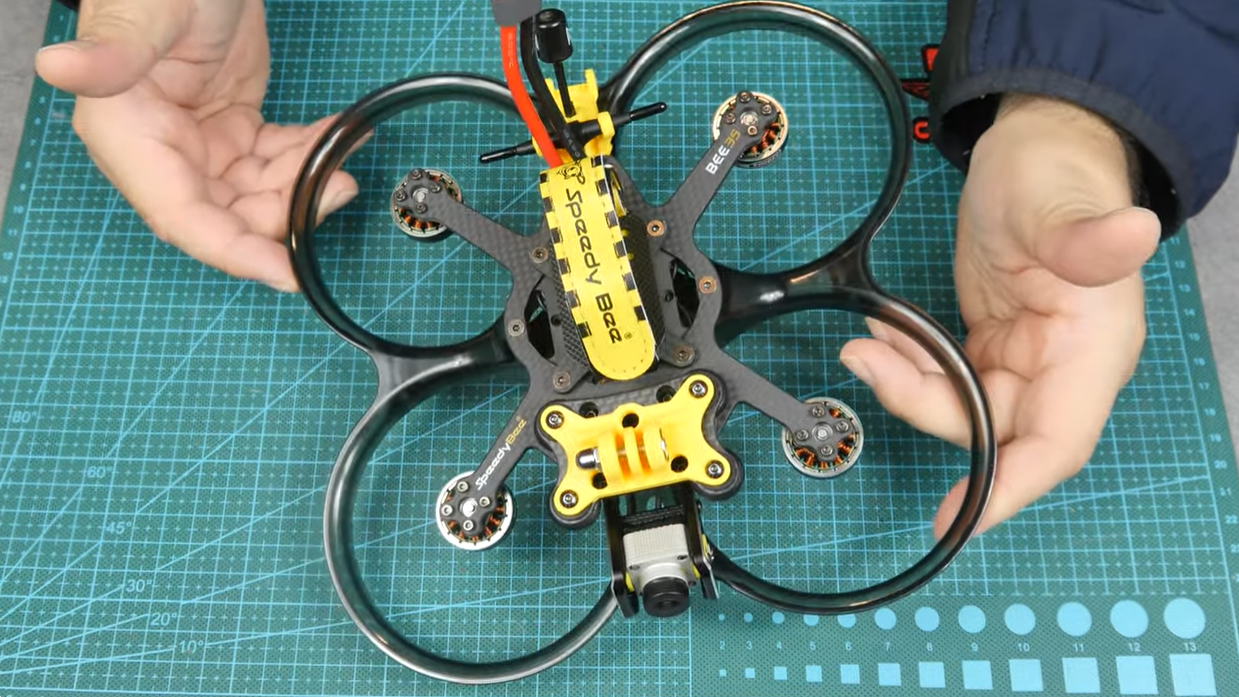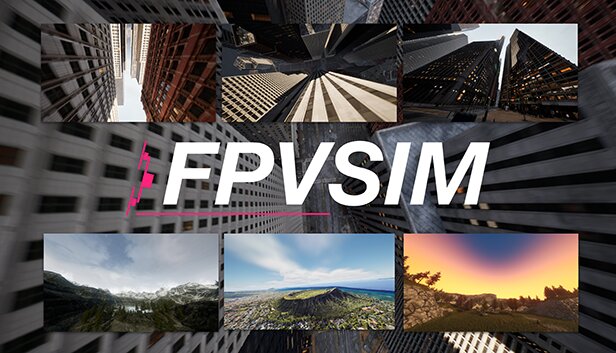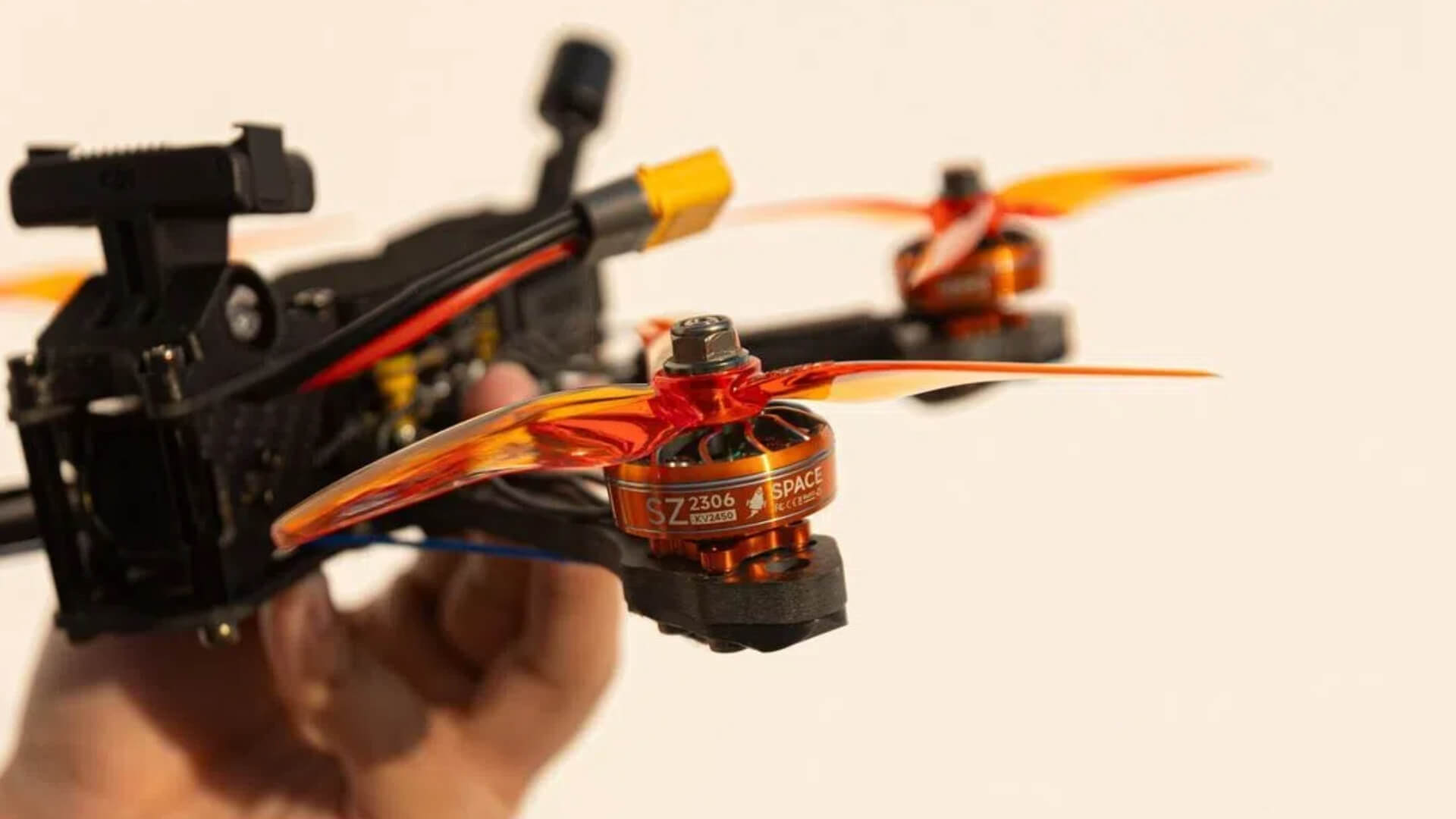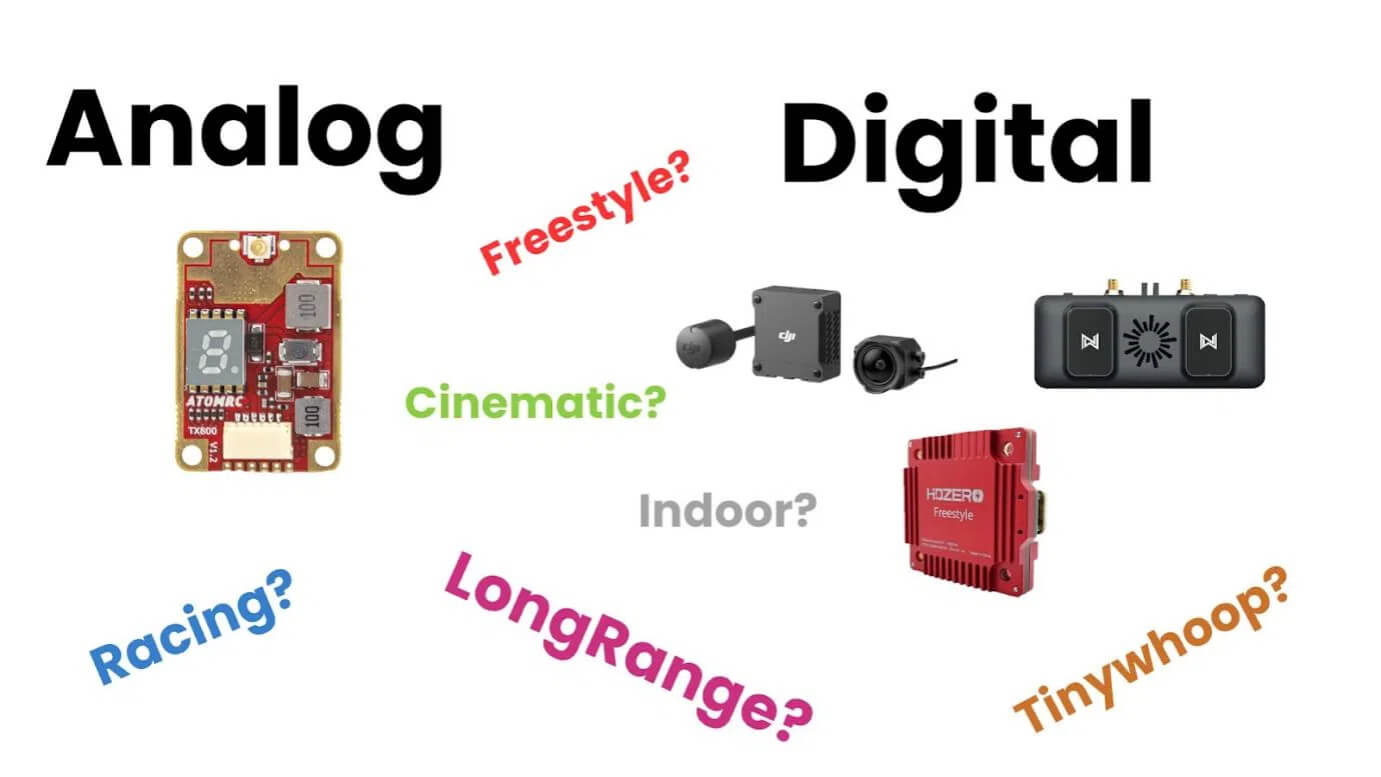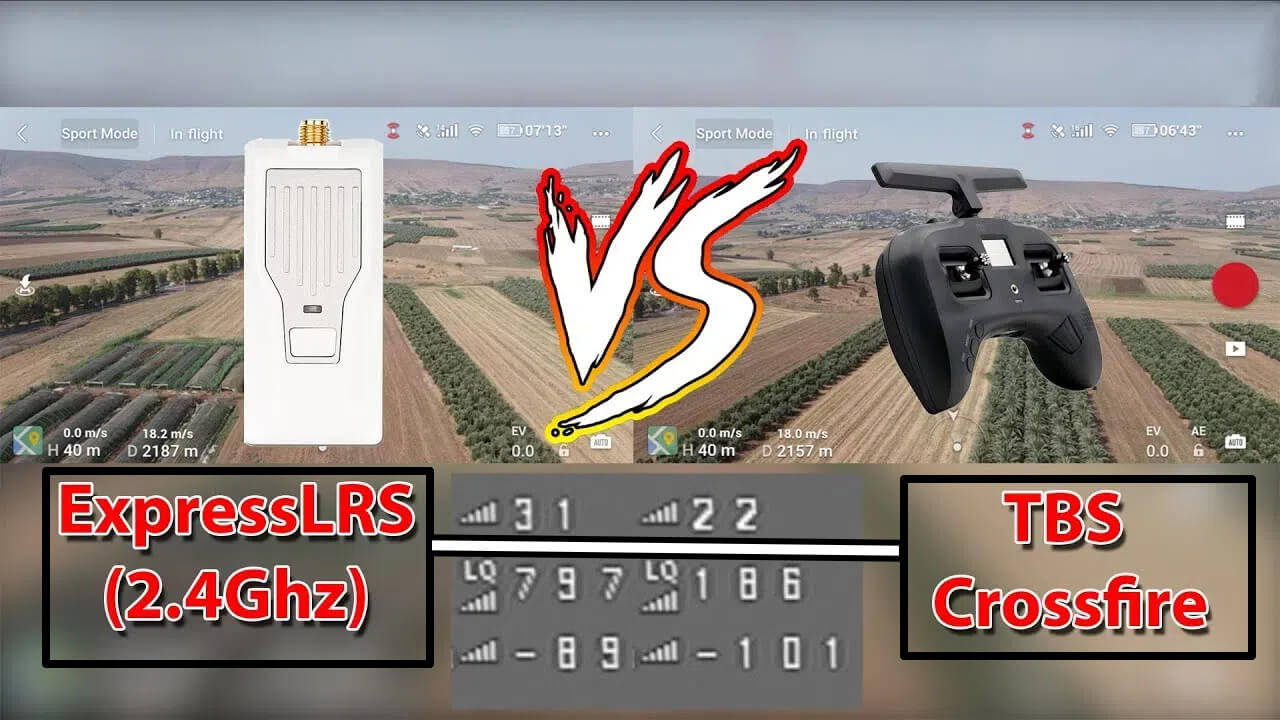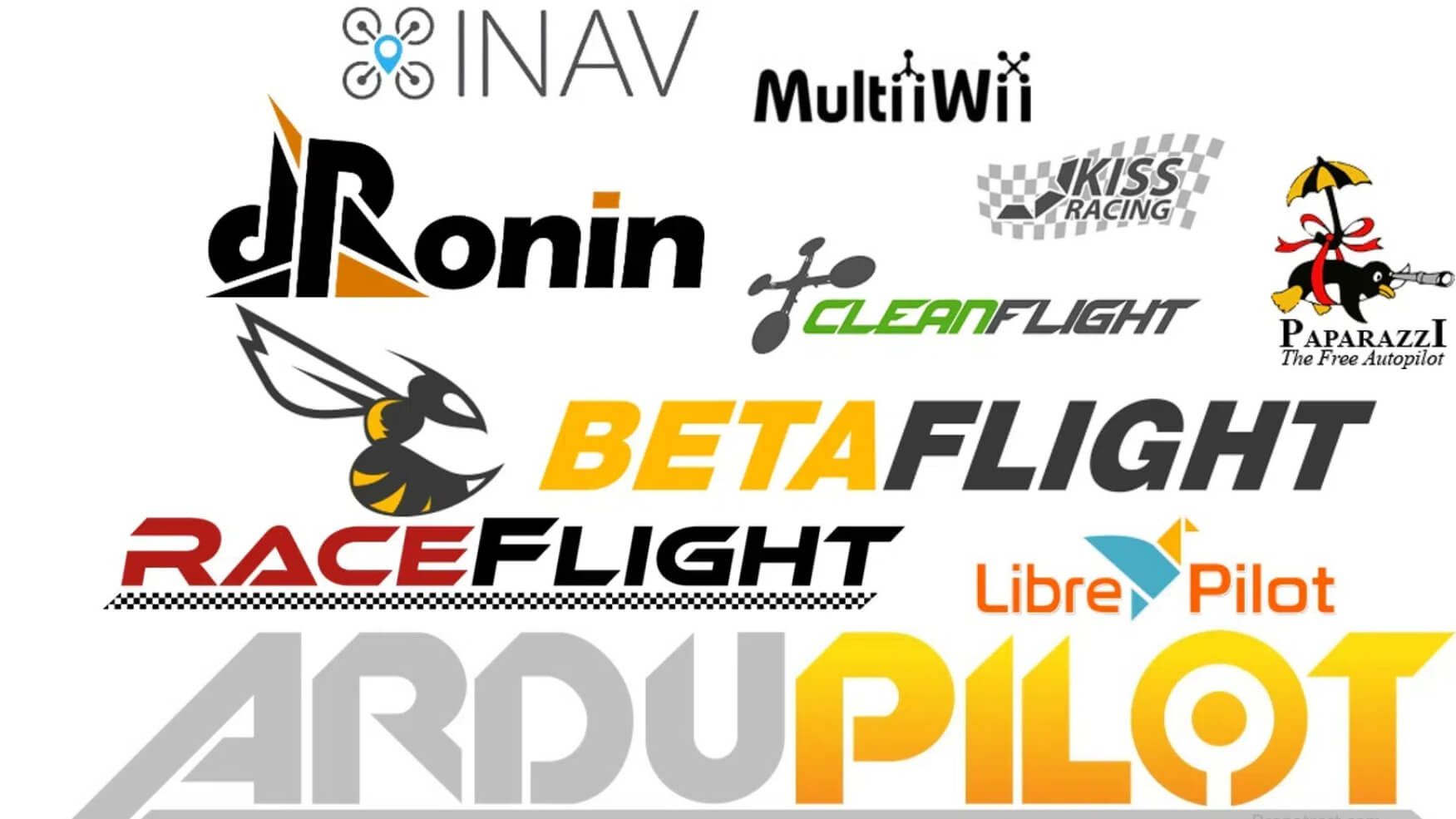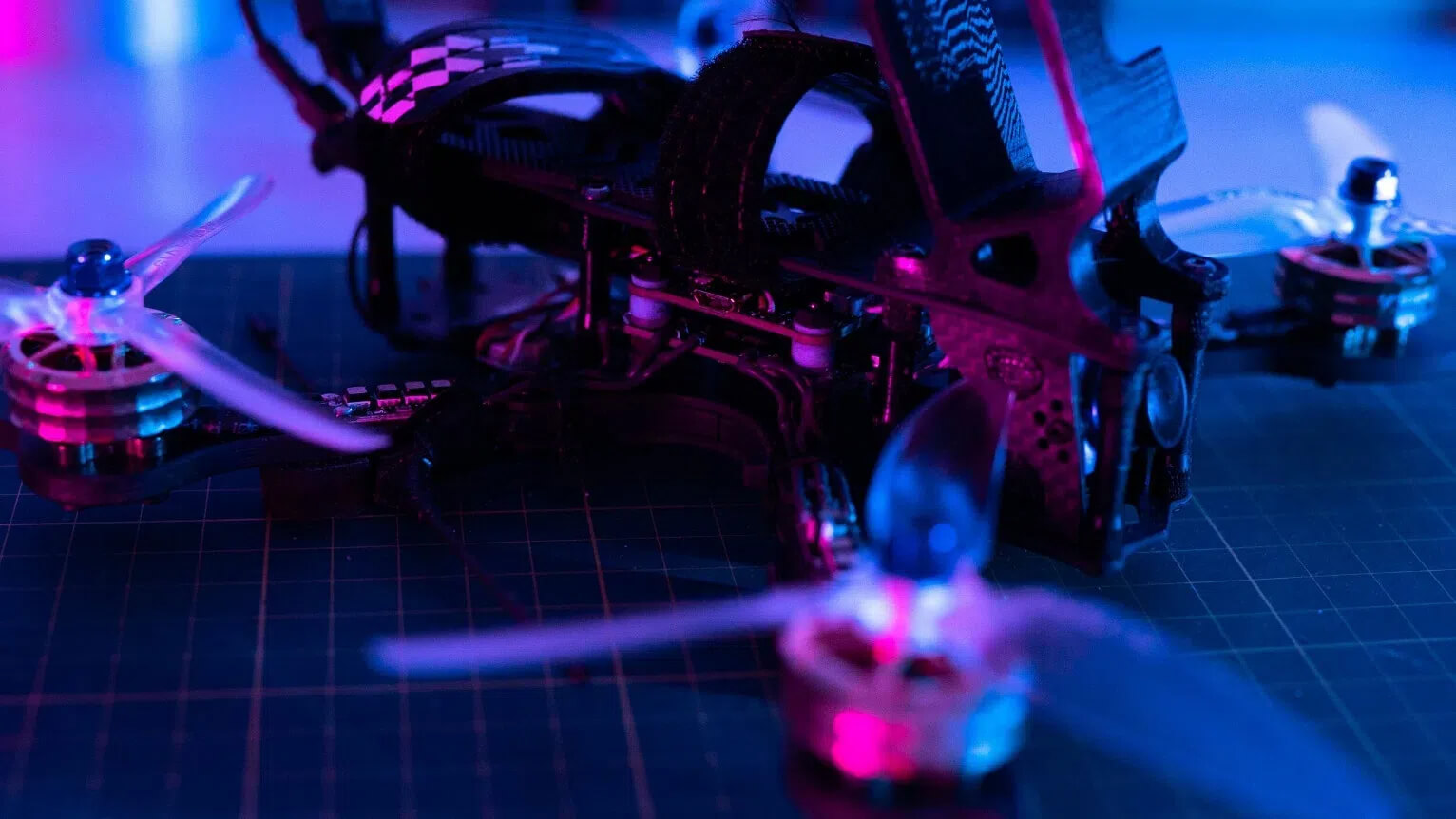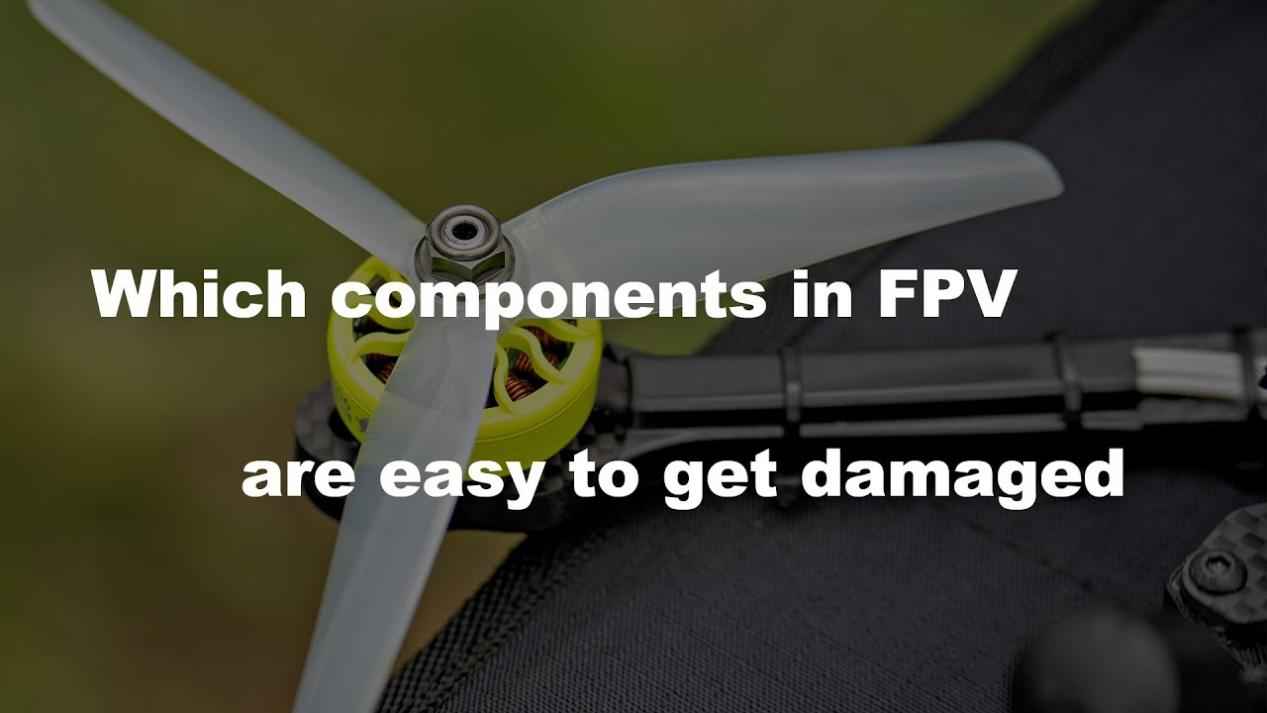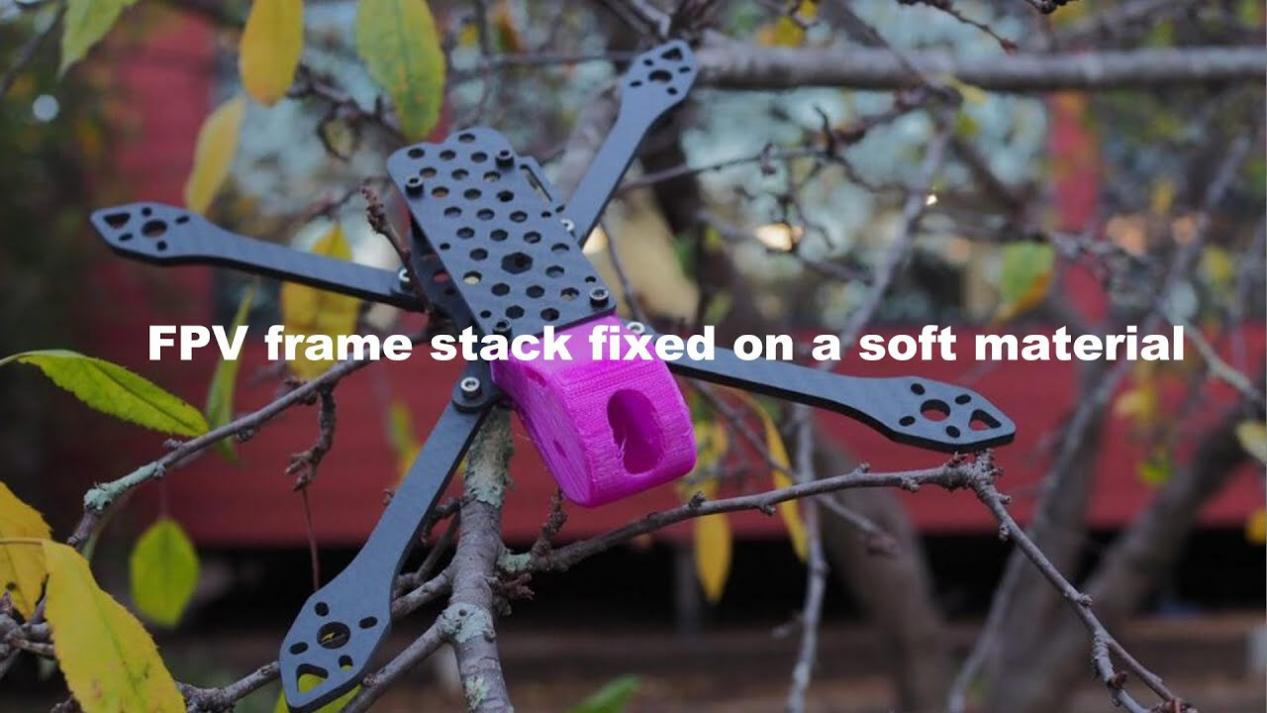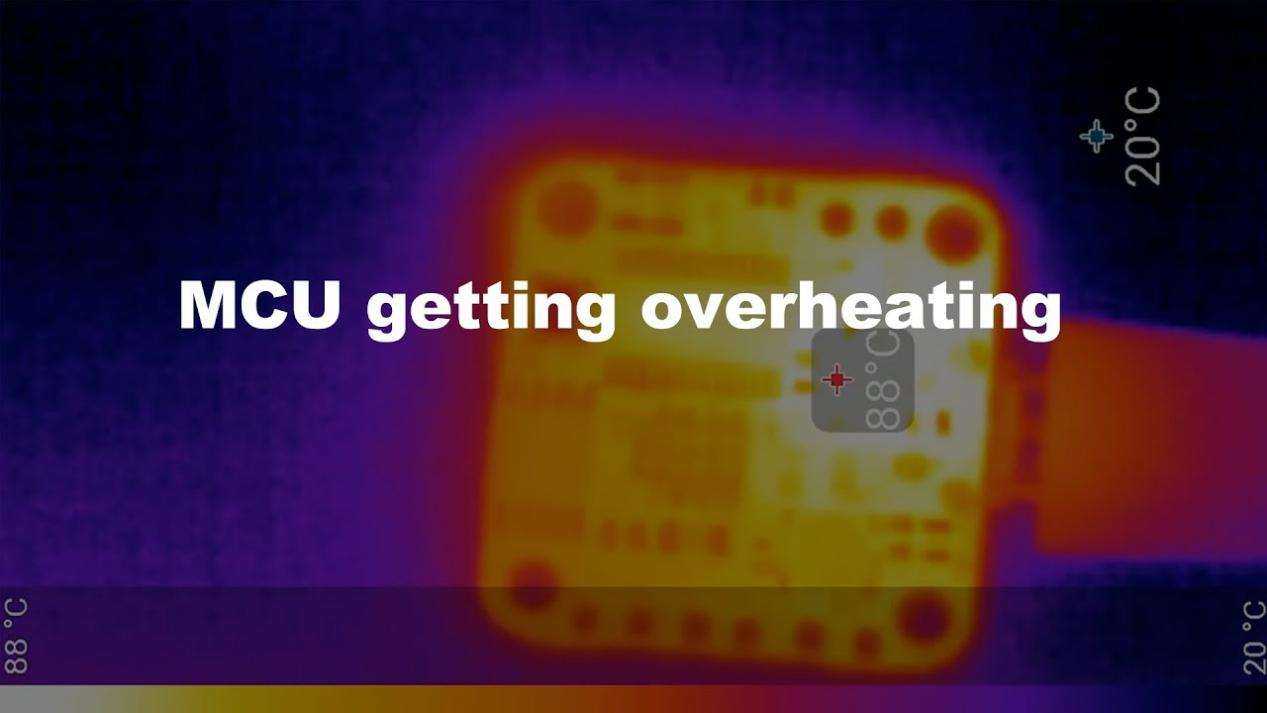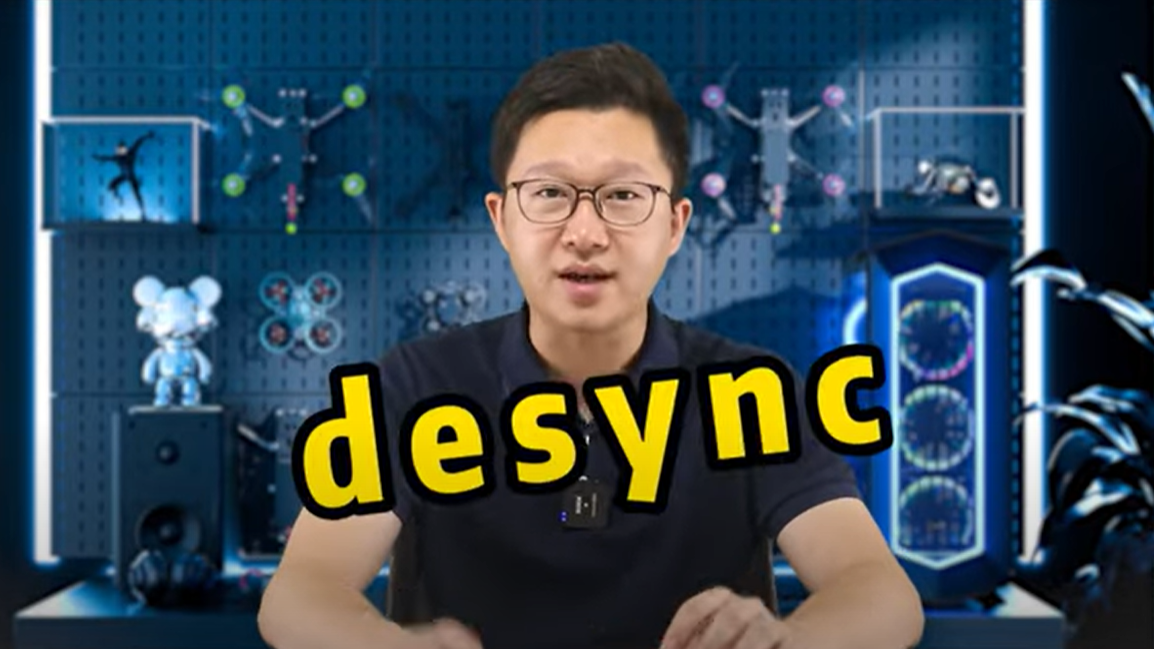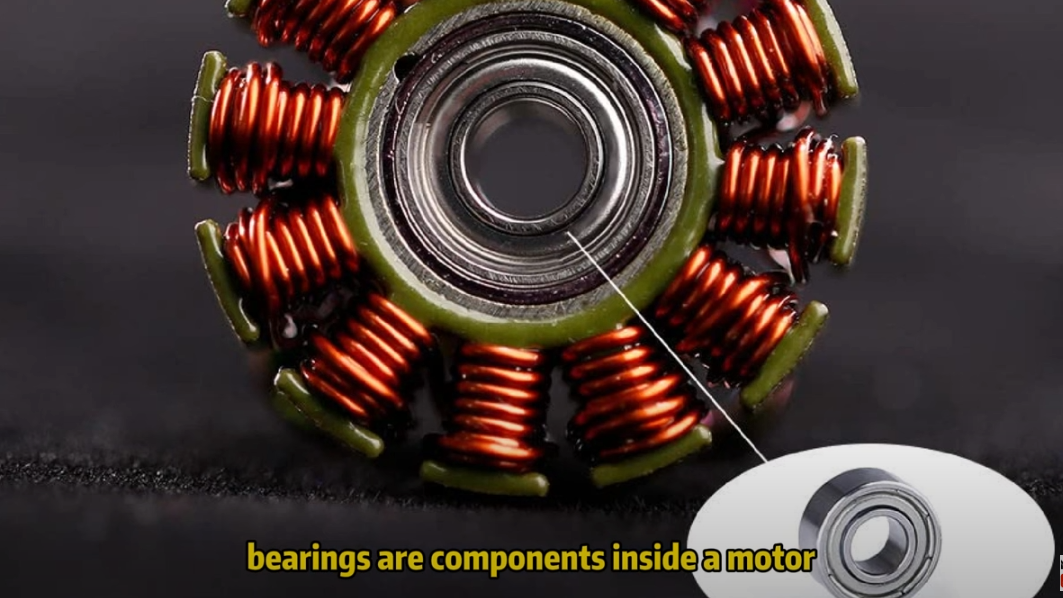Beginner’s guide
-
From Dreams to FPV Flying: My Journey to True Freedom
A Childhood Dream: My Early Fascination with Flying I was born with a special love for flying. When I was a child, I couldn't tell the difference between a remote-controlled aircraft and an FPV drone, but it still couldn't affect my expectations for flying. Whenever I sit in a seat by the window of an airplane and look out the window, I feel that the world in front of me is getting smaller bit by bit, as if I am flying in the vast sky. Although I was still very young at the time, I often imagined that one day I would be able to fly an airplane freely in the sky like a pilot. In addition to looking at planes, I also like everything related to flight, such as model planes and photography. I like to fiddle with various models of aircraft, no matter how big or small, and try to use a camera to record the moment each model flies. It is these hobbies that make the dream of flying deeply rooted in my heart. The First Step: Discovering the Limits of DJI Drones After working, my first salary finally gave me the opportunity to realize my childhood…- 0
- 0
- 42
-
What is the Best Software For FPV Drone Programming ?
Introduction With the rise of drones in various fields, from FPV drone racing to aerial photography, drone programming has become a key skill to maximize their potential. To get the most out of these flying machines, specific software has been developed to fine-tune their behavior, optimize flight settings, and customize controls. In this article, we explore the best drone programming software, with a particular focus on Betaflight and its alternatives. Why Use FPV Drone Programming Software Let's introduces the importance of using software to configure and fine-tune FPV drones to optimize their performance. Customization of Parameters: Adjust PIDs, rotation rates, flight modes, and more. Improved Stability: Reduce vibrations and improve precision. Accessory Control: Program systems like LEDs, cameras, and other onboard accessories. Firmware Updates: Keep your drone updated with the latest stability improvements and features. Betaflight : A Leader in FPV Drone Programming Betaflight is one of the most popular programming software for FPV drones, especially in the world of racing and acrobatics. What is Betaflight? Open-source: Betaflight is an open-source project used by a large community. Use: Primarily used with STM32-based flight controllers, Betaflight is ideal for pilots who want to tweak every aspect of their drone’s behavior. Key Features: PID…- 0
- 0
- 90
-
Choosing a Charger for FPV Drones: A Comprehensive Guide
Choosing the appropriate charger is very important to ensure effective and safe flying of FPV (First Person View) drones. Suitable charger does not only enhance battery life but also make them readily available for use whenever needed. In this article we will discuss on type of FPV batteries, how to choose the right one, power considerations and at what time can you charge multiple batteries. Difference Between LiPo and Li-ion Batteries Generally, there are twotypesof FPV drone batteries: LiPo (Lithium Polymer) and Li-ion (Lithium Ion). Each of these types possesses unique characteristics that affect the choice of a charger. LiPo Batteries: These are usually foundin most FPV drones due to their high discharge rate (C-rate) which in turn makes them suitable for high-power performance applications or instances. Accordingly, they lean towards taking less space thus making them light weight so as to enable supply large amountsof current within a short duration required by such powered by gliders during acceleration time.Lithium polymer require proper management during charging while charging since they are too vulnerable against over-charging and excessive laboratories as such. Li-ion Batteries: on the other hand, although they are less frequently used, they are gradually becoming popular because of their…- 0
- 0
- 35
-
ELRS Modules: An in-depth beginners guide
And as in the drone and R/C models world, stable communication is a lifeline. The ELRS modules have become a new trend in solution for people who would like the best performance at an excellent price point. In this complete guide, I will cover in detail about the ELRS modules - What is it, Features of Telemetry Unit, what type does it comes with and other useful reference getting started. We apprecieate a lot if you buy ELRS modules or other FPV parts or kits at MEPSKING drone shop. What is an ELRS Module? The piece of electronic device that is fitted onto your remote controller or drone would be an ELRS module, allowing it communicate into the ExpressLRS Radio System. Choose FPV drone radio receivers from MEPSKING for reliable signal and responsive control. Built as an alternative to high performance radio control systems, ExpressLRS is designed for the neediest case of 5ms speed at all time and long range. In sharp contrast to the use-locked hardware of proprietary traditional radio systems, ExpressLRS leverages an open-source code that is freely accessible and can be modified by anyone who has access to a compiler or hex file above version 2.0/0x00200000 bits…- 0
- 0
- 111
-
Matching the FPV Motor and Battery for Your Drone: A Comprehensive Guide
Introduction In the vibrant and ever-evolving realm of drone innovation, the careful and precise selection of FPV drone motor and batteries emerges as a cornerstone for unlocking optimal performance. Whether you find yourself captivated by the memorizing world of drones as a passionate enthusiast or as a seasoned pilot seeking to elevate your aerial pursuits, the meticulous pairing of motor and battery components stands as an indispensable endeavor. Within the expansive confines of this article, we embark on an immersive journey, delving into the intricate intricacies of this vital match-up with meticulous detail. Our aim is to equip you with the knowledge, insights, and expertise necessary to navigate this dynamic landscape with confidence, enabling you to make informed decisions that will propel your drone's capabilities to new heights of excellence. Understanding FPV Drone Power Requirements The total weight of your drone is a key factor in motor and battery selection. Every additional gram will impact performance and flight time. When determining required thrust, consider the flight characteristics you're aiming for. Higher thrust may be needed for acrobatics or increased maximum speed. FPV Motor Selection Brushless motor is often favored for their efficiency and power compared to brushed motors. However, brushed…- 0
- 0
- 143
-
How To Pick Receiver For Your Fpv Drone?
What Is a FPV Receiver? First we need to discuss what FPV receivers are and what is their job on a drone. Receivers are like ears on a drone that listen for your radio transmitter commands processes them and sends them further to flight controller that then converts them back into the commands and executes them. Some fpv receivers have better range and penetration than others but we will get to that in a moment. Do I Need Receiver On My Drone? Receiver is crucial component for your drone as without one you have no way of telling your drone what to do, some recent digital systems like DJI Air unit, DJI O3 and Caddx vista(smaller version of DJI original air unit made by Caddx) have built in receivers that can be used only with DJI transmitters, but you can still use regular external receivers. Receiver Telemetry, What Is It? Another feature on receivers is telemetry, But what does it do? In short receiver telemetry is data that is transferred in between TX and RX, for example: Battery voltage Current draw Stick positions Flight mode RSSI Link quality Transmitting power GPS coordinates GPS altitude GPS satellites acquired Magnetic orientation and…- 0
- 0
- 12.6k
Recent posts
- From Dreams to FPV Flying: My Journey to True Freedom 21/11/2024
- What is the Best Software For FPV Drone Programming ? 06/10/2024
- Choosing a Charger for FPV Drones: A Comprehensive Guide 02/10/2024
- ELRS Modules: An in-depth beginners guide 13/08/2024
- What Drone Motor Sizes Do I Need for My FPV? 09/08/2024
- Betaflight, ArduPilot and INAV, which FC Firmware is right for you? 09/08/2024
- How to Setup SmartAudio For VTX Control (Change VTX Settings from OSD) 31/07/2024
Builds
-
Understanding FPV Assembly: A Guide to fpv drone Screws
Introduction: This guide introduces the various types of screws essential for FPV drone assembly, covering their specific uses from frame assembly, securing ESCs and flight controllers, motor mounting, to attaching top plates and cameras. It highlights the importance of using the correct sizes and types, like M3 button head screws for frames, long screws for ESCs and flight controllers, socket head screws for motors, countersunk screws for sleek top plate design, and M2 or M1.6 screws for camera mounting, ensuring a successful and efficient drone build. Frame Assembly: Uses M3 button head screws, 8mm or 10mm, with standoffs. ESC/FC Mounting: Employs long screws around 34mm; smaller drones use M2 screws. Motor Mounting: Uses socket head screws, with lengths varying for arm or guard mounting. Top Plate: Utilizes countersunk screws for a flat surface. Camera Mounting: Involves M2 or M1.6 screws, 4mm or longer. What you need: Freestyle Recommended: Racing Recommended: Here are the products shown in the video: Video Overview Screws, small and essential, you need many different types of fpv drone screws to assemble a FPV drone, in this video we will introduce some commonly used screws and help you get a basic understanding of them. FPV drone Screws…...- 0
- 0
- 464
-
How to mount a 3.5″ cinewhoop with MEPS 2004 motor
Introduction: This video offers a concise guide on assembling a 3.5-inch CineWhoop drone with a focus on installing a digital video system, highlighting key assembly steps and flight capabilities. Guide Overview: How to assemble a 3.5-inch CineWhoop drone with a digital video system. Key Components: Speedyb35 frame, MEPS 2004 motors, digital FPV. Tools: Hex wrenches, soldering iron. Assembly Steps: Frame setup, electronics installation. Betaflight Setup: Configuration for optimal performance. Motor Testing: Ensuring correct motor order and spin direction. Flight Insights: Agility and power evaluation, propeller upgrade suggestion. Final Note: Drone ready for flight, balance of power and efficiency highlighted. What you need: Freestyle Recommended: Racing Recommended: Here are the products shown in the video: Video Overview In today's video, we're diving into the exciting process of assembling a 3.5-inch CineWhoop drone equipped with potent motors and a digital video system. While we focus on a digital setup, converting to an analog system is straightforward for those who prefer it. Initial Impressions and Flight Test Unveiling the Drone We begin by unboxing and preparing the drone for its maiden flight. Equipped with a new battery, the drone is remarkably agile, thanks to its 2507 motors. Despite using a powerful setup, I…...- 0
- 0
- 177
-
Building an Apex 4 Drone with MEPS 2004 motor: Step-by-Step Guide
Introduction: This guide provides a comprehensive step-by-step walkthrough for building an Apex 4 FPV drone, utilizing MEPS 2004 motors, an FC F7 flight controller, 40-amp ESCs, and an ExpressLRS receiver, tailored for both beginners and seasoned enthusiasts. Project Goal: Assemble an Apex 4 FPV drone featuring MEPS 2004 motors, an FC F7 controller, 40-amp ESCs, and an ExpressLRS receiver. Key Components: MEPS motors with mounting accessories, and guidance on ESC soldering and insulation. Flight Controller: Steps for FC installation, ESC connector adjustment, and receiver setup. Betaflight Setup: Instructions for firmware update, port configuration, motor protocol selection, and system adjustments. Optimization: Details on ESC firmware upgrade and Betaflight fine-tuning for optimal performance. Performance Testing: Successful flight test with 6S batteries, highlighting excellent drone responsiveness and control. Conclusion: A guide suitable for beginners and experienced pilots to build a high-performance Apex 4 drone. What you need: Freestyle Recommended: Racing Recommended: Here are the products shown in the video: Video Overview Today, we embark on an exciting project: building an Apex 4 fpv drone. This guide will cover everything from selecting the right components to the final setup, making it accessible even for beginners. We will use Maps engines, an FC F7 flight…...- 0
- 0
- 162
Parts
-
ELRS Modules: An in-depth beginners guide
And as in the drone and R/C models world, stable communication is a lifeline. The ELRS modules have become a new trend in solution for people who would like the best performance at an excellent price point. In this complete guide, I will cover in detail about the ELRS modules - What is it, Features of Telemetry Unit, what type does it comes with and other useful reference getting started. We apprecieate a lot if you buy ELRS modules or other FPV parts or kits at MEPSKING drone shop. What is an ELRS Module? The piece of electronic device that is fitted onto your remote controller or drone would be an ELRS module, allowing it communicate into the ExpressLRS Radio System. Choose FPV drone radio receivers from MEPSKING for reliable signal and responsive control. Built as an alternative to high performance radio control systems, ExpressLRS is designed for the neediest case of 5ms speed at all time and long range. In sharp contrast to the use-locked hardware of proprietary traditional radio systems, ExpressLRS leverages an open-source code that is freely accessible and can be modified by anyone who has access to a compiler or hex file above version 2.0/0x00200000 bits…- 0
- 0
- 111
-
What Drone Motor Sizes Do I Need for My FPV?
Considerations When Choosing a Drone Motor--Drone Motor Sizes Choosing the right drone motor sizes is essential for optimizing your FPV drone's performance, whether you're aiming for speed, agility, or stability. Drone motor sizes directly impact the drone's power, efficiency, and overall flight characteristics. Understanding the differences between various motor sizes will help you make an informed decision that aligns with your specific flying needs, from racing to freestyle or cinematic flying. In this guide, we will be concentrating on the drone motor sizes, which is one of the most important factors you should consider when you are choosing the right motor for your FPV drone. If you want to learn more about how to choose a drone motor, read this guide on How to choose fpv drone motor a detailed guide 2024 What Drone Motor Sizes We Need? Like 2208 Brushless Motor and 2217 Brushless Motor Brushless Drone Motor Components There are two major components to a brushless motor: Rotor - the rotating component with the magnets arranged in a radial manner Stator - the portion with electromagnets that is non-rotating Brushless Drone Motor Sizes Explained Just like the meps motor 2306 for example: length of rotor shaft: 30mm±5 inner…- 0
- 0
- 1.2k
-
TBS Crossfire (CRSF): Differences Between Nano RX and Micro RX
TBS Crossfire (CRSF) receivers are an integral part of the remote control system for drones and other applications requiring reliable long-range communication. Manufactured by Team BlackSheep (TBS), a leader in the drone industry, CRSF receivers are valued for their stability, range, and low latency. This article explores the features of TBS CRSF receivers, how they work, and why they are a popular choice among drone pilots. What is TBS Crossfire (CRSF)? TBS Crossfire is a long-range radio transmission system designed to offer stable and secure connections between a transmitter and a receiver. It's used primarily in drones but is also applicable to other forms of radio-controlled modeling. The CRSF system operates at lower frequencies than traditional systems, such as 2.4 GHz, to achieve greater range and reliability. There are three different types of TBS CRSF receivers (Micro, Nano, Diversity); today, we will discuss the differences between Micro RX and Nano RX. Size and Weight In the drone world, every gram counts. Whether you are a drone racer, a freestyle enthusiast, or a professional, the choice of radio receiver can significantly affect your drone's performance. TBS is one of the most renowned brands in the radio transmission sector, and its Crossfire…- 0
- 0
- 89
-
Which FPV System is the Best?
If you are a pilot who is exploring new FPV system or a person who wants to enter this world,this article is for you! You will be able to find the different technologies with which you can get to arm your drone and a very simple benchmarking based on my experience, since I have had the opportunity to try them all for more than 4 years. In this way you can have first-hand information based on the personal experience of a pilot and understanding what you could use each system and get the best out of it. About the FPV Systems Let’s start with something simple, now we can find two great FPV systems in the market: Analog fpv system and digital fpv system. Analog fpv system is the classic video that has been used since the beginning in FPV drones. This technology has different characteristics and different uses and we can highlight within them the versatility that has to be implemented in all types of drones, also in order to reach large distances and better penetrations in environments. Approximately three years ago digital video technology for FPV drones initially had the technology developed by DJI which evolved over time…- 0
- 0
- 128
-
How To Pick Receiver For Your Fpv Drone?
What Is a FPV Receiver? First we need to discuss what FPV receivers are and what is their job on a drone. Receivers are like ears on a drone that listen for your radio transmitter commands processes them and sends them further to flight controller that then converts them back into the commands and executes them. Some fpv receivers have better range and penetration than others but we will get to that in a moment. Do I Need Receiver On My Drone? Receiver is crucial component for your drone as without one you have no way of telling your drone what to do, some recent digital systems like DJI Air unit, DJI O3 and Caddx vista(smaller version of DJI original air unit made by Caddx) have built in receivers that can be used only with DJI transmitters, but you can still use regular external receivers. Receiver Telemetry, What Is It? Another feature on receivers is telemetry, But what does it do? In short receiver telemetry is data that is transferred in between TX and RX, for example: Battery voltage Current draw Stick positions Flight mode RSSI Link quality Transmitting power GPS coordinates GPS altitude GPS satellites acquired Magnetic orientation and…- 0
- 0
- 12.6k
-
FPV Receiver: difference between 2.4GHz and 915MHz and TBS ELRS
In the world of FPV (first-person view), data transmission between the transmitter and the drone is essential for a reliable and responsive connection during flight. Two of the most popular telemetry protocols for FPV drones are ELRS (ExpressLRS) and TBS Crossfire FPV Receiver, both with unique features and devoted followers. In this article, we will explore the differences between ELRS and TBS Crossfire to help you understand which might be the best choice for your needs. ELRS Receiver(ExpressLRS): Open Source Technology ELRS, or ExpressLRS, is an open-source telemetry protocol that has rapidly gained popularity in the FPV community due to its combination of high performance, low latency, and affordable cost. Here are some key features of ELRS: Low Latency: ELRS is known for offering extremely low latency, resulting in quick and precise responses to pilot commands. This is particularly important for acrobatic flying and racing, where every millisecond counts. High Transmission Speed: ELRS uses frequencies of 2.4GHz or 868MHz, providing sufficient bandwidth for fast and reliable data transmission between the transmitter and the drone. Ease of Access: Being an open-source project, ELRS is accessible to everyone and can be implemented on a wide range of radio hardware, allowing pilots to…- 0
- 0
- 924
Parameter
-
What is the Best Software For FPV Drone Programming ?
Introduction With the rise of drones in various fields, from FPV drone racing to aerial photography, drone programming has become a key skill to maximize their potential. To get the most out of these flying machines, specific software has been developed to fine-tune their behavior, optimize flight settings, and customize controls. In this article, we explore the best drone programming software, with a particular focus on Betaflight and its alternatives. Why Use FPV Drone Programming Software Let's introduces the importance of using software to configure and fine-tune FPV drones to optimize their performance. Customization of Parameters: Adjust PIDs, rotation rates, flight modes, and more. Improved Stability: Reduce vibrations and improve precision. Accessory Control: Program systems like LEDs, cameras, and other onboard accessories. Firmware Updates: Keep your drone updated with the latest stability improvements and features. Betaflight : A Leader in FPV Drone Programming Betaflight is one of the most popular programming software for FPV drones, especially in the world of racing and acrobatics. What is Betaflight? Open-source: Betaflight is an open-source project used by a large community. Use: Primarily used with STM32-based flight controllers, Betaflight is ideal for pilots who want to tweak every aspect of their drone’s behavior. Key Features: PID…...- 0
- 0
- 90
-
Betaflight, ArduPilot and INAV, which FC Firmware is right for you?
The world of FPV drone, UAV and RC software is an ever-changing plethora of options and to a newcomer, it may seem daunting to even think about. From the pool, three names stand out in the world of flying UAVs or FPV drones: Betaflight, ArduPilot and INAV. These three flight software offers different suites of features tailored to one’s needs and the only thing needed to figure out which one is right for you is this very article! Join the MEPS blog as you learn about all the possibilities these programs offer. And join MEPS drone shop to buy FPV drone to fly! What’s FC Firmware? The flight controller software that runs on a flight controller and manages an FPV drone's operations is called FC firmware. It impacts flight characteristics and performance, and different firmware versions have different benefits and drawbacks for different flying philosophies. There are three FC Firmware of FPV drone will be introduced: Betaflight, Ardupilot and INAV. What is Betaflight? Betaflight is by far the most used software in the world for FPV drones where agility and responsiveness are paramount. The reason for this is the integration of the acro as a flight mode in the software…...- 0
- 0
- 268
-
How to Setup SmartAudio For VTX Control (Change VTX Settings from OSD)
Introduction Racing drones and FPV (First Person View) drones are increasingly popular among flight enthusiasts. For these pilots, having complete control over their video system is crucial. SmartAudio is a technology that allows you to adjust the video transmitter (VTX) settings directly from the On-Screen Display (OSD). This detailed guide explains how to set up SmartAudio to control the VTX from the OSD. What is SmartAudio? SmartAudio is a communication protocol developed by TBS (Team BlackSheep) that allows control of various aspects of video transmitters (VTX) via the flight controller. With SmartAudio, pilots can change the transmission power, frequency, and even disable the transmitter, all directly from the OSD. This offers increased flexibility and convenience, especially during races where conditions can change rapidly. Prerequisites for the Setup Before starting, make sure you have the necessary hardware and software: An FPV drone with a SmartAudio-compatible VTX. A flight controller that supports Betaflight or another compatible firmware. A computer with Betaflight Configurator installed. A USB cable to connect the flight controller to the computer. Connecting the VTX to the Flight Controller The first step is to properly connect the VTX to the flight controller. Here are the general steps to make this…...- 0
- 0
- 161
Troubleshooting and Maintenance
-
Which Parts of FPV Drone are Most Likely to Break and How to Protect Them?
Introduction: Flying FPV drones is an exhilarating hobby, offering a unique perspective and thrilling experience. However, the high speeds and complex maneuvers that make FPV flying so exciting also increase the risk of damage to the drone. Understanding which parts are most susceptible to damage and how to protect them is crucial for maintaining the longevity and performance of your drone. This article delves into the components of an FPV drone most likely to break and provides safety tips to help protect your investment. Vulnerable Parts: Propellers, motors, frame arms, and antennas are prone to damage in FPV drones. Propellers: Most susceptible to breakage upon impact, but inexpensive and easy to replace. Motors: High-speed flights strain motors, especially after crashes, but durable MEPS motors offer better resilience. Frame Arms: Carbon fiber arms bear crash impacts; separate arm designs allow easier replacement. Antennas: Critical for signal transmission, prone to breaking or disconnection during crashes; secure mounting is essential. Check for Short Circuits: Use a multimeter before first flight to detect potential short circuits, preventing damage to flight controller or ESC. Secure Wires: Fasten all wires securely during assembly to avoid propeller contact and potential damage during crashes. Delay Propeller Mounting: Complete… -
How to Fix Issues with Soft-Based FPV Drone Frames
Introduction: This article addresses issues faced by FPV pilots using soft-based frames for their drones. These frames, featuring flexible materials like TPU, can cause instability during flight due to shaking and resonance. The recommended solution is to replace the frame with a more rigid alternative for improved stability. Alternatively, pilots on a budget can 3D print a hard base to minimize shaking issues. By addressing these challenges, pilots can enhance flight performance and enjoy a smoother FPV flying experience. Issue with Soft-Based Frames: Flexibility of materials like TPU causes shaking and resonance in drone stack, leading to instability during flight. Impact on Flight: Erratic behavior makes control difficult, increasing crash risk and undermining flying experience. Solution: Replace soft-based frame with rigid alternative for better stability. Budget-Friendly Option: 3D print hard base using TPA to minimize shaking without replacing entire frame. Conclusion: Soft-based frames pose challenges; switching to rigid frames or 3D printing hard bases enhances stability for smoother FPV flights. What you need: Freestyle Recommended: Racing Recommended: Video Overview Some FPV pilots encounter difficulties when using soft-based FPV drone frame mounting for their drone components. Understanding the implications of this setup and how to address it is essential for maintaining… -
How to Fix Flight Controller MCU Overheating Problem
Introduction: This article addresses concerns among FPV pilots regarding MCU (Microcontroller Unit) overheating in flight controllers, particularly after USB connection. It outlines normal MCU functions, acceptable temperature range (70-80°C), and a simple test using soldering oil to identify overheating. For overheating issues, prompt action such as repair or replacement is recommended to ensure drone reliability and safety during flights. Understanding and managing MCU overheating are crucial for maintaining optimal drone performance and longevity. MCU Functions: Flight controller's MCU functions like a CPU, generating heat during operation. Temperature Range: Normal range: 70-80°C; exceeding indicates potential overheating issues. Testing Method: Apply soldering oil to MCU; boiling indicates overheating. Action: Promptly address overheating concerns by repairing or replacing the flight controller. Importance: Crucial to manage MCU overheating for optimal drone performance and longevity. What you need: Freestyle Recommended: Racing Recommended: Video Overview Many FPV pilots have expressed concerns about their flight controller's MCU overheating, especially after plugging in the USB. Understanding the nature of MCU overheating and how to address it is crucial for ensuring the longevity and performance of your FPV drone. Normal MCU Functions and Heat Generation The MCU (Microcontroller Unit) of a flight controller is akin to a small CPU,… -
How to solve FPV Drone Take Off issue?
Introduction: This guide aims to simplify the essentials for beginners venturing into the world of FPV drones by detailing the required equipment and associated costs. It covers choosing a radio controller, understanding the price range for FPV drones, the importance of FPV goggles, selecting drone batteries, and anticipating additional expenses. Emphasis is placed on making informed decisions within a budget by opting for high-quality gear that minimizes potential high upgrade costs in the future. Key considerations and tips are provided to assist in this process. Always factor in the cost of additional batteries and a charger when budgeting. Choose equipment that suits your skill level and growth potential. Prioritize quality gear that aligns with the preferences of experienced pilots. Begin with simulators to sharpen skills before transitioning to actual drone flying. Understand that the cost of an FPV setup varies widely, making research and careful selection crucial. What you need: Freestyle Recommended: Racing Recommended: Video Overview Encountering issues with your FPV drone not taking off can be frustrating, especially after investing time and effort into setting it up. Fear not, my friend, as the solution is often simpler than you might think. By following these three crucial steps, you can… -
How To Fix Desync In 59 Seconds
Introduction: This guide provides a quick solution to the FPV desync issue, a problem where motors unexpectedly stop spinning during flight, leading to crashes. It explores both hardware replacements (ESC or motors) and adjustments in motor timing, PWM frequency, and demag compensation as effective fixes. Desync Issue Explanation: Motor stops spinning unexpectedly during flight, leading to crashes. Hardware Replacement: Swapping out ESCs or motors, preferably for different models, as a complete fix. Alternative Fixes Without Hardware Change: Adjust motor timing to auto. Change PWM frequency range to By PRM. Set demag compensation to low for recovery post-desync. What you need: Freestyle Recommended: Racing Recommended: Here are the products shown in the video: What is desync issue? Somethimes in flying, when you push the throttle and do some action, one of your motors will stop spining, and then most likely you will crush. When reviewing the black box data, you may find the control signal curve for motor increase rapidly to 100%. However the gyroscope records indicate that the aircraft's attitude did not respond as expected to this motor speed increase; instead, it suddenly dropped to zero. Why does ESC Desync? Common reasons for ESC desync include of: RPMs that are too… -
How to Check if the FPV Motor Bearings are Damaged?
Introduction: This guide provides a concise method for checking FPV motor bearings for damage. By removing the rotor and inspecting the bearings, users can assess their condition. By gently rotating the shaft, any clicking sounds or resistance indicate damage to the bearings. Regular checks help maintain optimal performance and prevent costly repairs. Early detection and maintenance are key to prolonging FPV equipment lifespan and enhancing the flying experience. Remove the rotor carefully and inspect the bearings on the stator. Check the lower bearing by gently rotating the shaft for clicking sounds or resistance. Similarly, assess the upper bearing for any irregular movement or clicking sounds. Regular checks ensure optimal performance and prevent costly repairs, enhancing the overall FPV flying experience. What you need: Freestyle Recommended: Racing Recommended: FPV motor bearings are crucial components which is pretty easy to damage. When a bearing is damaged, you have two options. You can choose to replace the entire motor directly which is the easy but expensive, another option is replace the bearing which we recommend you to do as FPV will always have problems, and you can save a lot of money if you can fix those components. There are pretty of the online tutorials available for this…

